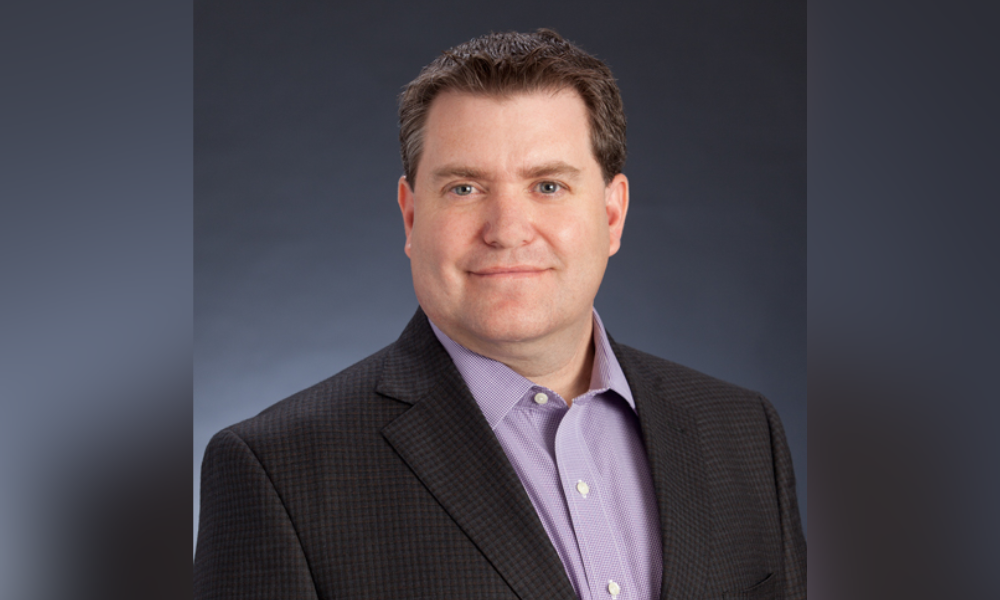SVP at Medavie Blue Cross outlines why communication, personalization and convenience are integral to a virtual care offering

Plan sponsors who haven’t already embraced virtual care are trying to catch-up and according to one benefits expert, the race to the finish line is far from over.
David Adams reflects on how the landscape of health benefits has been dramatically reshaped by the COVID-19 pandemic and how that shift has redefined both the role of insurers and the expectations of plan sponsors. After more than a decade in the industry, he sees a clear inflection point in how people access and value healthcare.
“People have a better appreciation now for what digital care can provide. There's a lot of great innovation happening in the digital health care space,” said Adams, senior vice president, insurance business at Medavie Blue Cross.
“We look at our role in the health insurance industry as facilitators of health care. Plan sponsors want to have a very good benefit package to help them recruit, but fundamentally, they want a healthy, productive, predictable workforce. To get that today, that means opening avenues to get health care in different ways.”
Virtual care, once considered as an opt-in or non-tradition benefit, has moved into the mainstream benefits offerings. He sees today’s plan members being far more open to trying non-traditional forms of care than they were pre-pandemic.
“They were more than willing to try something new through COVID, and that’s just continued,” he noted.
Whether it’s virtual therapy or video consultations for ADHD and chronic conditions, Adams sees this dual-access model, digital and traditional, essential for meeting today’s workforce expectations. But this shift isn’t just about innovation for innovation’s sake.
At its core, plan sponsors need to align benefits with what employees want and need. He argues digital care is central to that.
Additionally, plan sponsors, he emphasized, must ensure access not only to in-person healthcare professionals but also to digital providers who can meet members wherever they are and that often means choice and convenience.
“Plan members are really healthcare consumers,” he said, noting that a successful platform must offer a wide range of services, along with clear education around what’s available.
“What a plan sponsor can do is demand optionality for their plan members and education for their plan members of what is available as options. Plan sponsors are demanding insurance carriers to offer more comprehensiveness to the delivery of service and to that access of care… As health insurers, we need to be facilitating that.”
He acknowledges that despite the growing popularity of digital healthcare solutions, a significant portion of plan members still prefer traditional, in-person interactions.
“There are plan members who really want to sit down and speak to somebody. They want to interact in person,” he said, pointing to areas like mental health and primary care.
Still, Adams sees digital health as having transformed access, especially for those who previously might not have engaged with the healthcare system at all. He notes that since the pandemic, there's been a noticeable shift in how members are using their benefits.
“Post-pandemic, we’re seeing the people who potentially didn’t always access health care, because they were accessing the public system in a different way and using their benefit program now to access their healthcare needs,” he said.
That shift is largely driven by the convenience that digital platforms offer, something particularly resonant with younger plan members.
“Convenience is important. Convenience is what everybody is used to, and this is making healthcare very, very accessible for that younger cohort of our plan membership,” Adams added.
He pointed to the broadening scope of what’s available virtually. From physiotherapy sessions guided over video to online fitness classes and yoga, the definition of healthcare access has expanded.
“Digital avenues to care have really opened this up to more plan members,” he said.
One of the biggest hurdles plan sponsors face in their transition to a digital-first benefits environment isn’t just providing the services but ensuring plan members know how to access them. Adams explained that while comprehensive benefits plans may exist on paper, they’re only truly effective if employees understand how to use them.
That’s why he emphasized digital tools like member portals, mobile apps, and advisor platforms are becoming essential. The goal is to present information in a way that’s simple, clear, and easy to act on.
“Providing the service is one thing, communicating that the services [are] available is another,” Adams said. “Communicating that they're all available is bit of a secret recipe.”
One solution Adams highlighted is ultimately understanding the definition of “healthcare navigation.”
“Healthcare navigation really means helping people get access to care in the most efficient way, and that they understand how to do it,” said Adams. “It's incumbent on all of us to make sure that we have sound communication, so plan members know what's available.”



